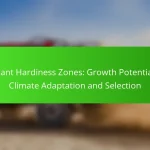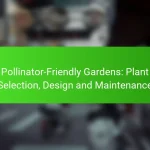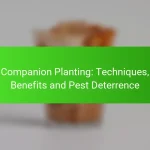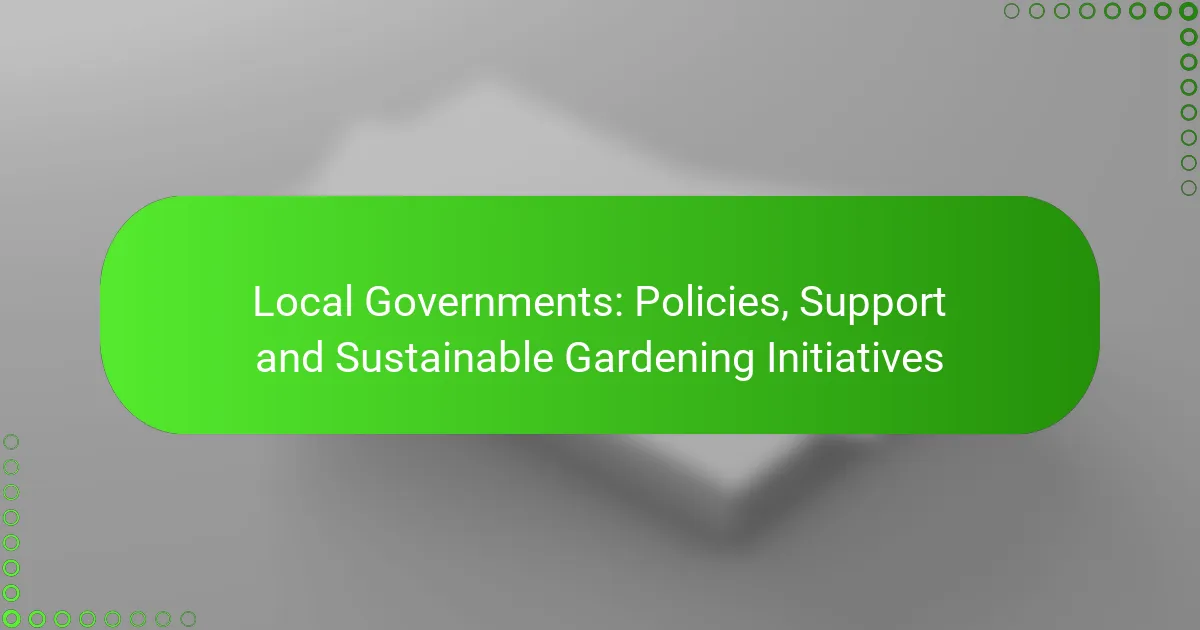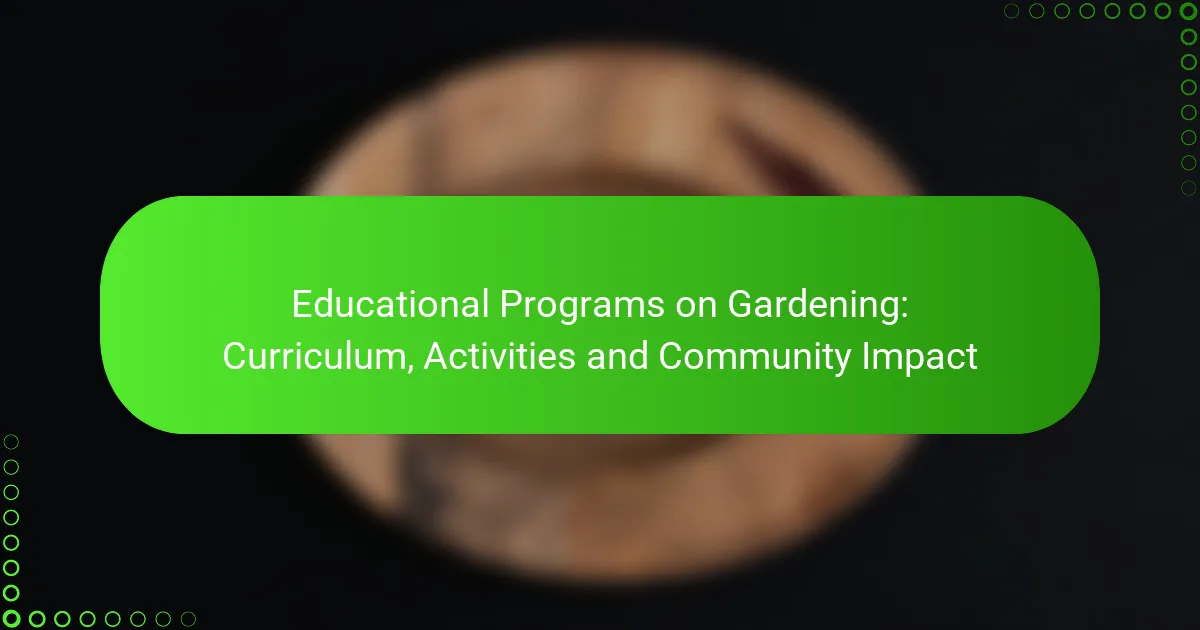Social media has become an invaluable resource for gardeners, providing platforms like Facebook, Instagram, Pinterest, Twitter, and WhatsApp to connect, share, and learn. These channels not only foster community engagement but also offer visual inspiration and expert advice, helping gardeners enhance their skills and stay updated on trends. By participating in online groups and challenges, gardeners can collaborate with like-minded individuals and cultivate their passion for gardening.

Which social media platforms are best for gardeners in South Africa?
For gardeners in South Africa, the best social media platforms include Facebook, Instagram, Pinterest, Twitter, and WhatsApp. Each platform offers unique features that cater to different aspects of gardening, from community engagement to visual inspiration.
Facebook for community building
Facebook is ideal for gardeners looking to build a community. Groups focused on gardening topics allow members to share advice, ask questions, and showcase their gardens. Engaging in local gardening groups can help you connect with fellow enthusiasts in your area.
To maximize your experience, participate actively by posting photos of your plants or sharing tips. Avoid spamming the group with unrelated content, as this can lead to negative feedback from members.
Instagram for visual inspiration
Instagram excels at providing visual inspiration for gardeners. With its focus on images, you can discover beautiful garden designs, plant care tips, and seasonal ideas by following popular gardening accounts. Use relevant hashtags to find content that resonates with your gardening interests.
Consider creating your own account to document your gardening journey. Share high-quality images of your plants and progress, and engage with other gardeners by liking and commenting on their posts.
Pinterest for project ideas
Pinterest is a fantastic resource for gardeners seeking project ideas. You can find a wide range of DIY gardening projects, from vertical gardens to composting tips. By creating boards, you can organize your favorite ideas and refer back to them easily.
When using Pinterest, focus on saving pins that align with your gardening goals. This will help you stay organized and inspired as you plan your garden projects throughout the year.
Twitter for real-time updates
Twitter is useful for receiving real-time updates and news related to gardening. Following gardening experts, organizations, and hashtags can keep you informed about trends, events, and new products. This platform is great for quick interactions and sharing short tips or questions.
To make the most of Twitter, engage with others by retweeting interesting content and participating in gardening discussions. Keep your tweets concise and relevant to attract followers who share your gardening interests.
WhatsApp for local group communication
WhatsApp is an effective tool for local group communication among gardeners. You can create or join groups to discuss gardening topics, share local plant sales, or arrange meetups. This platform allows for quick and direct communication, making it easy to stay connected with fellow gardeners.
When using WhatsApp, be mindful of group etiquette. Keep discussions focused on gardening and respect members’ privacy by not sharing personal information without consent.
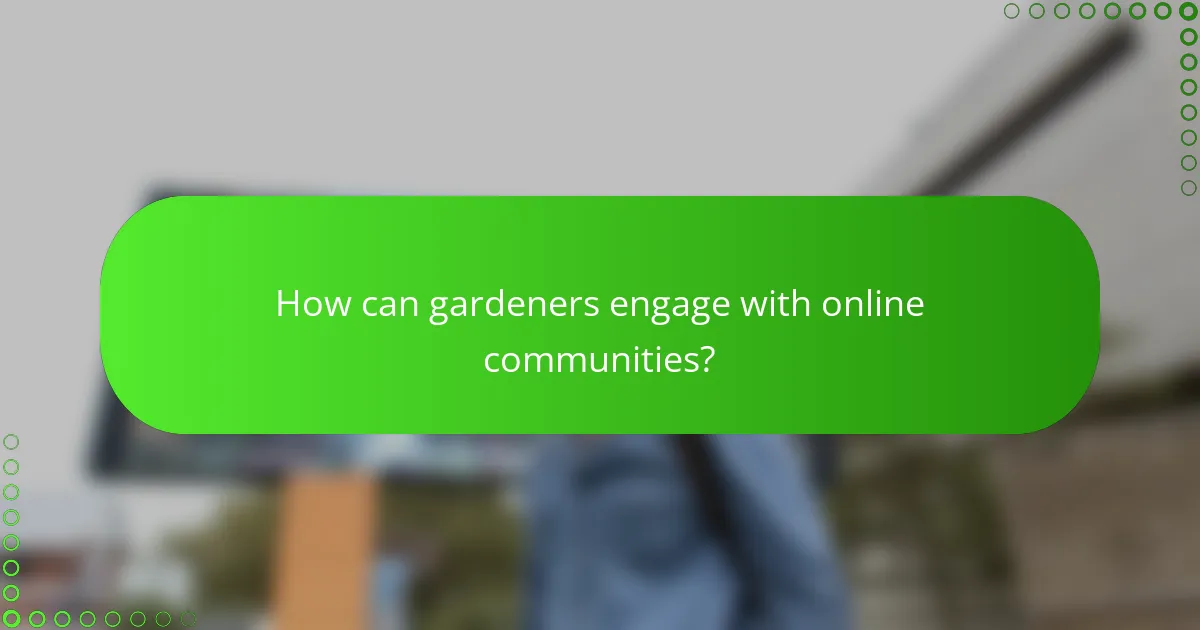
How can gardeners engage with online communities?
Gardeners can engage with online communities through various platforms that foster sharing, learning, and collaboration. By participating in groups and challenges, they can connect with like-minded individuals and enhance their gardening skills.
Joining Facebook gardening groups
Facebook gardening groups provide a space for gardeners to share experiences, ask questions, and showcase their plants. Members can find groups focused on specific interests, such as organic gardening or native plants, allowing for tailored discussions.
To join, simply search for gardening-related groups on Facebook and request to join. Active participation, such as commenting on posts or sharing photos, can help build connections and gain insights from fellow gardeners.
Participating in Instagram challenges
Instagram challenges encourage gardeners to share their work through themed hashtags, such as #GardenChallenge or #PlantOfTheDay. These challenges can boost visibility and inspire creativity, as participants showcase their gardening progress and techniques.
To get involved, follow popular gardening accounts and look for ongoing challenges. Engaging with others’ posts by liking and commenting can foster a sense of community and encourage reciprocal interactions.
Sharing tips on gardening forums
Gardening forums, such as GardenWeb or Reddit’s r/gardening, allow users to post questions, share advice, and discuss various gardening topics. These platforms often have sections dedicated to specific plants or gardening techniques, making it easy to find relevant information.
When participating, be clear and concise in your posts. Providing detailed questions or sharing personal experiences can lead to more helpful responses from the community.
Creating YouTube tutorials
YouTube is an excellent platform for gardeners to create and share tutorials on various gardening techniques, from planting seeds to pest control. Video content allows for visual demonstrations, making it easier for viewers to understand complex processes.
To start, identify a niche or specific topic you are passionate about. Keep videos engaging and informative, and consider collaborating with other gardening YouTubers to expand your reach and audience.

What are the benefits of using social media for gardening?
Using social media for gardening offers numerous advantages, including access to expert advice, opportunities for networking, and staying informed about the latest trends. These platforms enable gardeners to connect with others, share experiences, and enhance their gardening skills.
Access to expert advice
Social media platforms host a wealth of gardening experts who share their knowledge through posts, videos, and live Q&A sessions. Gardeners can easily ask questions and receive tailored advice on specific issues, such as pest control or soil health.
Many groups and pages are dedicated to particular gardening styles or plants, making it easier to find specialized information. Engaging with these experts can lead to improved gardening practices and better results in your garden.
Networking with local gardeners
Social media allows gardeners to connect with others in their local area, fostering a sense of community. Joining local gardening groups can lead to friendships, collaborations, and the sharing of resources like seeds or tools.
These connections can also facilitate plant swaps or community gardening projects, enhancing the gardening experience and promoting sustainable practices within the community.
Staying updated on gardening trends
Following gardening influencers and organizations on social media keeps you informed about the latest trends, techniques, and products in the gardening world. This can include new plant varieties, innovative gardening tools, or sustainable practices that are gaining popularity.
Staying current with these trends can inspire new ideas for your garden and help you make informed decisions about what to plant or how to maintain your space effectively.
Finding local gardening events
Social media is an excellent resource for discovering local gardening events, such as workshops, plant sales, or community fairs. Many gardening clubs and organizations promote their events through social media, making it easy to stay informed.
Attending these events can provide hands-on learning opportunities, allow you to meet fellow gardeners, and expand your gardening knowledge. Check local group pages regularly to ensure you don’t miss out on these valuable experiences.

What criteria should gardeners consider when choosing social media platforms?
Gardeners should evaluate social media platforms based on their target audience, the type of content they want to share, and the engagement features available. These criteria help ensure that the platform aligns with their gardening goals and community-building efforts.
Target audience demographics
Understanding the demographics of a platform’s user base is crucial for gardeners. For instance, platforms like Instagram and Pinterest attract a younger audience, while Facebook tends to have a more diverse age range. Choosing a platform that matches the gardener’s target audience can enhance engagement and foster community.
Consider the interests and habits of potential followers. If the goal is to reach novice gardeners, platforms with educational content and tutorials may be more effective than those focused on professional horticulturists.
Content type suitability
Different platforms support various content types, which can influence a gardener’s choice. Visual platforms like Instagram and TikTok are ideal for sharing photos and videos of plants, garden designs, and quick tips. In contrast, platforms like Facebook and Reddit are better suited for longer discussions, articles, and community support.
Gardeners should assess what type of content they enjoy creating and sharing. If they prefer writing detailed articles or sharing extensive guides, a blog or Facebook group may be more appropriate than a visual-centric platform.
Engagement features
Engagement features play a significant role in building a community. Look for platforms that offer tools like polls, live videos, and comment sections to encourage interaction. For example, Instagram Stories allow for quick updates and engagement, while Facebook groups facilitate deeper discussions and resource sharing.
Evaluate how easy it is to connect with others on the platform. Features like hashtags on Instagram or community tags on Facebook can help gardeners reach a wider audience and engage with like-minded individuals effectively.
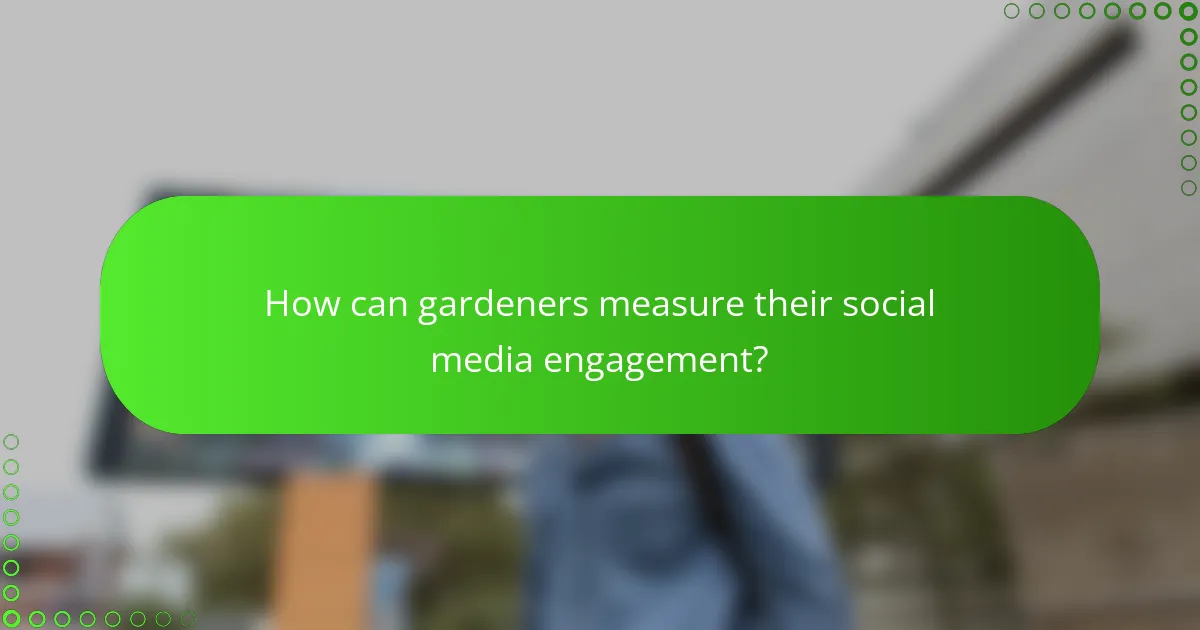
How can gardeners measure their social media engagement?
Gardeners can measure their social media engagement by analyzing metrics such as likes, shares, comments, and follower growth. These indicators help assess how well content resonates with the audience and can guide future posts.
Tracking likes and shares
Tracking likes and shares is essential for understanding the popularity of your posts. Likes indicate approval, while shares extend your reach by allowing followers to distribute your content to their networks.
To effectively track these metrics, use the analytics tools provided by social media platforms. For example, Facebook Insights or Instagram Analytics can show you which posts garnered the most engagement, helping you identify trends in your content.
Consider setting a benchmark for engagement, such as aiming for a 5-10% like-to-follower ratio. Regularly review your posts to see which topics or types of images generate the most likes and shares, and adjust your strategy accordingly.
